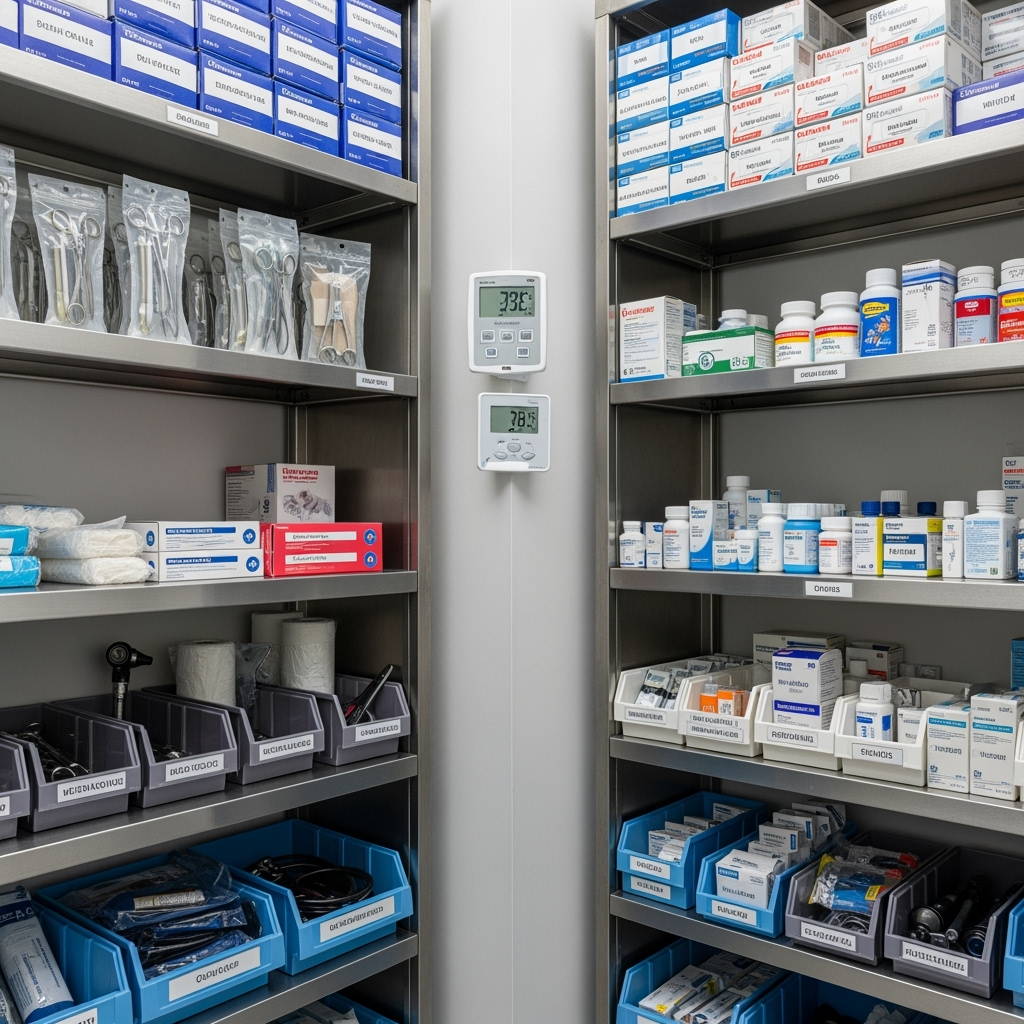Understanding the Challenge of Veterinary Equipment Storage
Moving a veterinary practice requires careful planning and specialized storage solutions to protect valuable medical equipment and ensure business continuity. Whether you’re relocating your clinic or expanding to a new location, proper storage of sensitive veterinary equipment is crucial for maintaining their functionality and compliance with medical standards.

Why Climate-Controlled Storage is Essential for Veterinary Equipment
Veterinary equipment requires specific environmental conditions to maintain its integrity and accuracy. Temperature fluctuations can affect calibration and compromise the functionality of sensitive diagnostic tools. Climate-controlled storage provides:
- Consistent temperature maintenance for sensitive equipment
- Humidity control to prevent corrosion and damage
- Protection from extreme weather conditions
- Optimal conditions for pharmaceutical storage
Organizing Your Storage Unit for Maximum Efficiency
Creating an organized system within your storage unit ensures easy access and proper equipment protection during the relocation process. Consider these organizational strategies:
- Create designated zones for different types of equipment
- Implement clear labeling systems
- Maintain inventory documentation
- Establish proper spacing for ventilation
Special Considerations for Different Equipment Types
Diagnostic Equipment
X-ray machines, ultrasound equipment, and other diagnostic tools require extra care during storage. Ensure proper padding and coverage to prevent damage to sensitive components.
Surgical Equipment
Maintain sterile conditions for surgical tools and equipment by using appropriate medical-grade storage containers and protective coverings.
Laboratory Equipment
Microscopes, centrifuges, and other lab equipment need careful packaging and positioning to maintain calibration during storage.
Maintaining Compliance and Safety Standards
Even during relocation, veterinary practices must maintain compliance with medical storage regulations. Consider these essential factors:
- OSHA requirements for medical equipment storage
- State veterinary board guidelines
- Insurance requirements for stored equipment
- Documentation of storage conditions
Practical Tips for a Successful Storage Plan
Follow these guidelines to ensure your veterinary equipment remains protected throughout the storage period:
- Create detailed equipment inventory lists
- Photograph equipment condition before storage
- Use appropriate packing materials
- Maintain access to essential items
- Regular monitoring of storage conditions
Choosing the Right Storage Solution
When selecting a storage facility for your veterinary equipment, look for these key features:
- 24/7 climate control monitoring
- Security systems and surveillance
- Easy access for equipment moving
- Clean, pest-free environment
- Professional facility management
Planning Your Timeline
Develop a comprehensive timeline for your storage needs:
- Equipment inventory and documentation
- Packing and protection preparation
- Transportation scheduling
- Storage unit setup and organization
- Regular monitoring schedule
Making the Move Smooth and Efficient
To ensure a successful veterinary practice relocation, consider these final recommendations:
- Partner with experienced movers familiar with medical equipment
- Maintain detailed records of stored items
- Create an emergency access plan
- Schedule regular equipment checks
- Plan for efficient unpacking and setup
With proper planning and the right storage solutions, your veterinary practice relocation can proceed smoothly while protecting your valuable medical equipment. Public Storage offers the climate-controlled environments and security features necessary to safeguard your veterinary investments during transition periods.










Leave a Reply